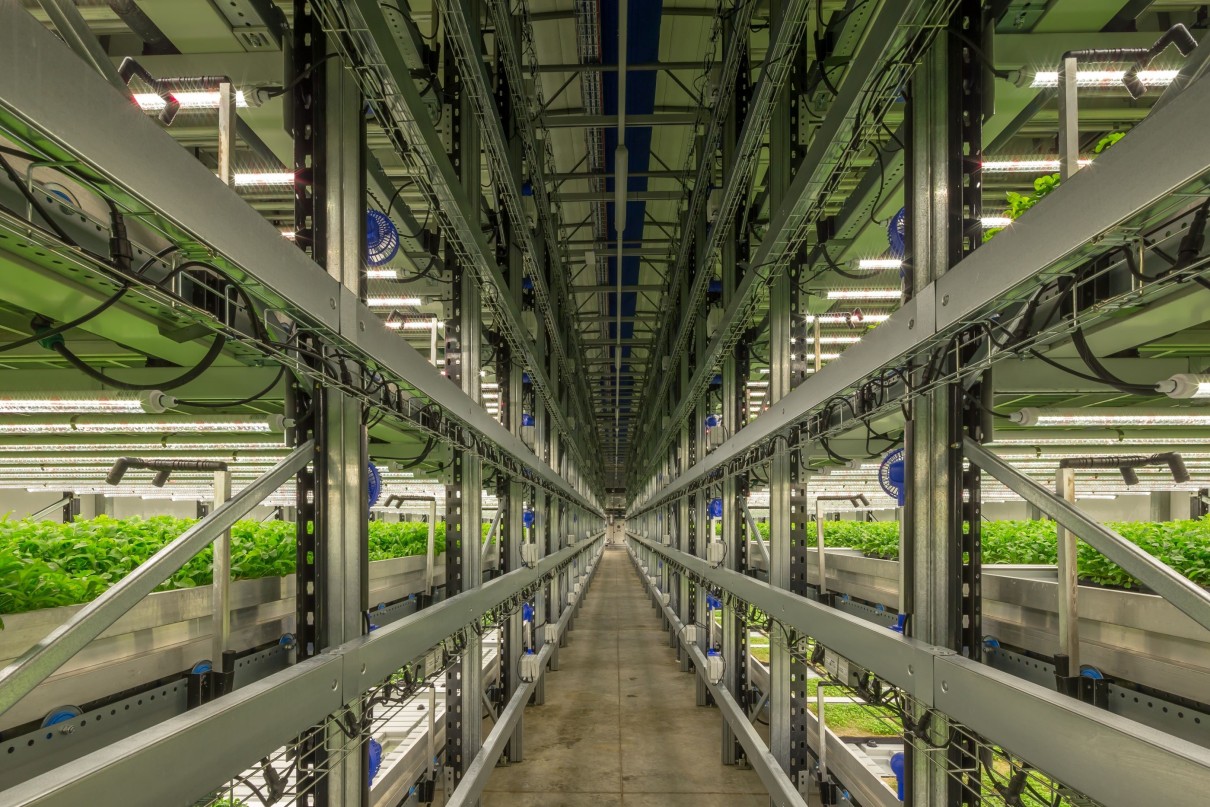Page content
Everything under control
Whether in high tunnels, greenhouses or vertical farming, growing produce in a controlled agricultural environment has considerable potential to make farming more climate-resilient, sustainable and more efficient. In this environment, crops are protected from weather losses and require less fertiliser and pesticides. Consumption of valuable resources such as soil and water can be reduced, and there is no need for heavy farming machinery. Transport distances are shorter, which reduces costs, emissions and food waste. And in general, crop yields are higher than in outdoor farming.
For Tom Stenzel, executive director of the US-based Controlled Environment Agriculture Alliance, there is another major advantage: the ability to supply consumers with consistently high-quality healthy fruit and vegetables 365 days a year, 24 hours after harvest. “Quality and freshness are the heartbeat of our business”, says Stenzel. In the US up to 85 per cent of tomatoes, cucumbers and peppers are currently produced in a controlled environment. In the case of leafy greens the figure is five per cent and rising. In theory, according to the CEA expert, almost any type of crop can be grown indoors. In practice however, there are major economic constraints.
Vertical farming under threat
In controlled environment agriculture the decisive factor is water consumption. In greenhouse farming this comes second to labour as the highest cost factor. Agriculture has been hard-hit by the rise in electricity and natural gas prices after Russia’s invasion of Ukraine, resulting in many greenhouse growers cutting production or giving up altogether. In recent months insolvencies among vertical farming operators especially have made the headlines, and have raised the question as to whether this sophisticated method of growing fruit and vegetables in vertically stacked layers in the smallest possible space has any future at all.
Cindy van Rijswick, an analyst with Rabobank in the Netherlands, is convinced it works. However, the extremely high investment of around ten million euros per hectare can only be recouped if all factors come together: low energy costs, availability of labour and consumers willing to pay prices that are often higher, she says. In Europe and the US these conditions were no longer met by February 2022 at the latest. That is one of the reasons why many companies are currently looking towards the Middle East. In the past, growers in particular often underestimated the amount of expertise required for this type of fruit and vegetable production, says van Rijswick. “We are not talking about a factory manufacturing screws or toilet paper where all you need to do is press a button, but about working with living organisms.”
AI helps optimise processes
However, companies have learned from experience. That is also evidenced by market analyses and interviews with leading figures in the business in the latest FRUIT LOGISTICA Trend Report. Furthermore, CEA systems are making use of increasingly sophisticated technology which helps to optimise processes and lower costs. The experts agree that with AI progress will take another giant leap forward. For example, it can enable producers to understand how minimal changes in environmental parameters – such as temperature, CO2 in the atmosphere, the intensity of lighting and its spectral makeup – influence plant growth. So does the future look good for CEA and vertical farming? Find out more in the Trend Report!
The Trend Report 2024 examines the future of vertical farming and highlights how it will help shape controlled environment agriculture. It is available as a free download from the FRUIT LOGISTICA website.




